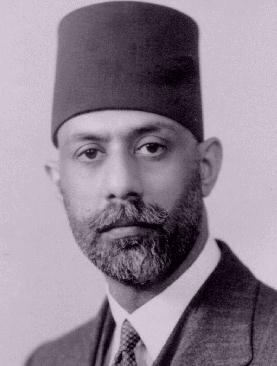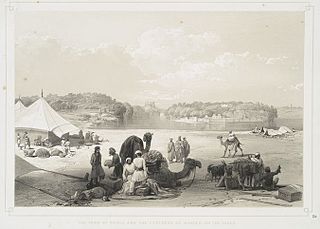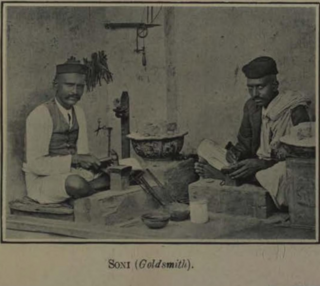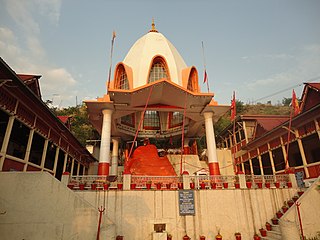
Khatri is a caste originating from the Punjab region of South Asia that is predominantly found in India, but also in Pakistan and Afghanistan. In the Indian subcontinent, they were mostly engaged in mercantilistic professions such as banking and trade. They were the dominant commercial and financial administration class of late-medieval India. Some in Punjab often belonged to hereditary agriculturalist land-holding lineages, while others were engaged in artisanal occupations such as silk production and weaving and some were scribes learned in Sanskrit or Persian.

Choudhry Rahmat Ali was a Pakistani nationalist who was one of the earliest proponents of the creation of the state of Pakistan. He is credited with creating the name "Pakistan" for a separate Muslim homeland in South Asia and is generally known as the originator of the Pakistan Movement.
Bhatia is a group of people and a caste found in Punjab, Sindh and Gujarat. Traditionally, they have been a trading and merchant community. The Bhatias primarily live in Northwestern India and Pakistan. The Bhatias, Lohanas and Khatris were similar communities and were known to intermarry. The Bhatias recruit Saraswat Brahmins as priests.

Mehsana, also spelled Mahesana, is a city and municipality in Mehsana district, in the Indian state of Gujarat. Established in 14th century, the city was under Gaekwads of Baroda State from 18th century to the independence of India in 1947. The municipality was established in 1919–20. The town has population of about 185,000. Dairy, oil and natural gas are major industries while there are several small and medium enterprises in the city.

Arora is a community of Punjab, comprising both Hindus and Sikhs. The name is derived from their native place Aror. In 712, the Arora people left Aror and started to settle in the cities of Punjab.

Swaminarayan, also known as Sahajanand Swami, was a yogi and ascetic, who is believed by followers to be a manifestation of Krishna, or as the highest manifestation of Purushottama, and around whom the Swaminarayan Sampradaya developed.
Gurjar is an Indo-Aryan agricultural ethnic community, residing mainly in India, Pakistan and Afghanistan, divided internally into various clan groups. They were traditionally involved in agriculture, pastoral and nomadic activities and formed a large heterogeneous group. The historical role of Gurjars has been quite diverse in society: at one end they have been founders of several kingdoms and dynasties and, at the other end, some are still nomads with no land of their own.
Jethwa is a clan of Rajputs and Koli castes of Gujarat. Jethwa surname is also found among Darji, Mistris of Kutch, Gurjar Kshatriya Kadias castes of Gujarat
Bania is a Vaishya caste mainly from the Indian states of Gujarat and Rajasthan, with strong diasporic communities in Uttar Pradesh, Madhya Pradesh, West Bengal, Maharashtra and other northern states. Traditionally, the main occupations of the community are merchants, bankers, money-lenders, and owners of commercial enterprises.

The Swaminarayan Sampradaya, also known as Swaminarayan Hinduism and Swaminarayan movement, is a Hindu Vaishnava sampradaya rooted in Ramanuja's Vishishtadvaita, characterized by the worship of its charismatic founder Sahajanand Swami, better known as Swaminarayan (1781–1830), as an avatar of Krishna or as the highest manifestation of Purushottam, the supreme God. According to the tradition's lore, both the religious group and Sahajanand Swami became known as Swaminarayan after the Swaminarayan mantra, which is a compound of two Sanskrit words, swami and Narayan.
Rajasthani people or Rajasthanis are a group of Indo-Aryan peoples native to Rajasthan, a state in Northern India. Their language, Rajasthani, is a part of the western group of Indo-Aryan languages.
Khatana is a major clan of the Gurjar (Gujjar) community of India, Afghanistan and Pakistan.

The Soni are a Hindu and Sikh goldsmiths found throughout India in the states of Punjab, Rajasthan and Gujarat. They are traditionally Goldsmiths and (Kshatriyas).
Rajasthanis are predominantly Hindu, Muslims and Jains. However, regardless of their religious segments, Muslim, Hindu and Jain Rajasthanis mingle with each other socially. Most Rajasthani Hindus are vaishnavas, however, Durga and her avatars are equally worshiped throughout Rajasthan. Oswals are predominantly Jains but small section of vaishnava Oswals are also found.

Kashmiri Hindus are ethnic Kashmiris who practice Hinduism and are native to the Kashmir Valley of India. With respect to their contributions to Indian philosophy, Kashmiri Hindus developed the tradition of Kashmiri Shaivism. After their exodus from the Kashmir Valley in the wake of the Kashmir insurgency in the 1990s, most Kashmiri Hindus are now settled in the Jammu division of Jammu and Kashmir and other parts of the country. The largest group of Kashmiri Hindus are the Kashmiri Pandits.
Harsol is a small town in the Talod taluka of the Sabarkantha district of Gujarat, India. This town has its importance for Harsol inscription, which is related with the Paramara King Siyaka II.
Vadod is a village and former Rajput non-salute princely state on Saurashtra peninsula in Gujarat, western India.
Kushan, or Kushana, is a major clan (gotra) of the Gurjar community of India, Pakistan, and Afghanistan. In some regions, especially Punjab and Kashmir, they are also known as Kasana Gujjars. They once ruled the Kushan Empire, from the 1st century CE until 375 CE. They practise a variety of religions, including Hinduism, Sikhism, Jainism, and Islam.
Baniya or Bania is a clan of the Gurjar community of India and Pakistan. They speak Gujari in the Himalayan region and a number of other languages in the other locations where they inhabit. They practise Hinduism and Islam. They are Muslims in Kashmir and Pakistan, and Hindus in northern Indian regions.
Tomar, or Tomara, is a clan of the Gurjar (Gurjara) community of India and Pakistan. They are mostly Hindus, but a few are also Sikh and Muslim in the Kashmir and Punjab regions. They are predominantly found in Haryana, Uttar Pradesh, Himachal Pradesh, Madhya Pradesh and Dehli. Prominent rulers "Anangpal I Gurjar" of the Tomara dynasty and "Man Singh Tomar Gujar"







